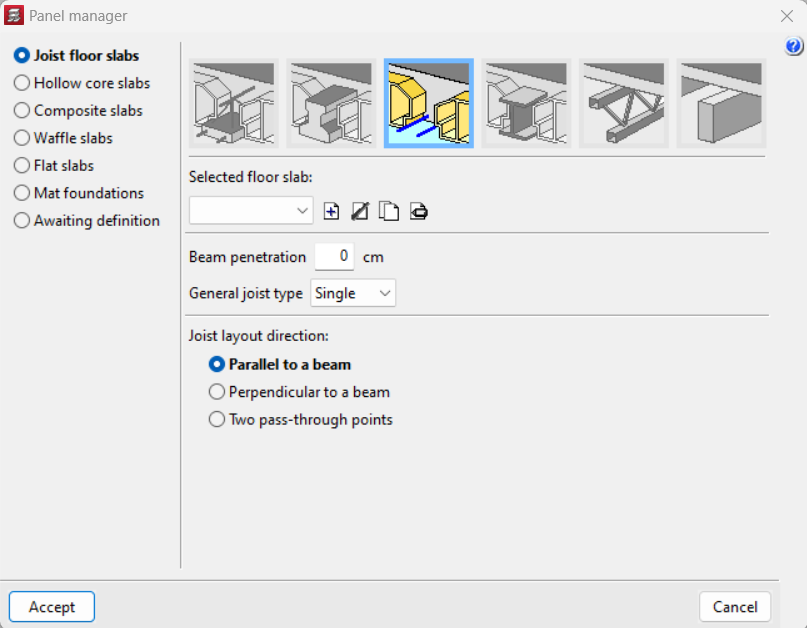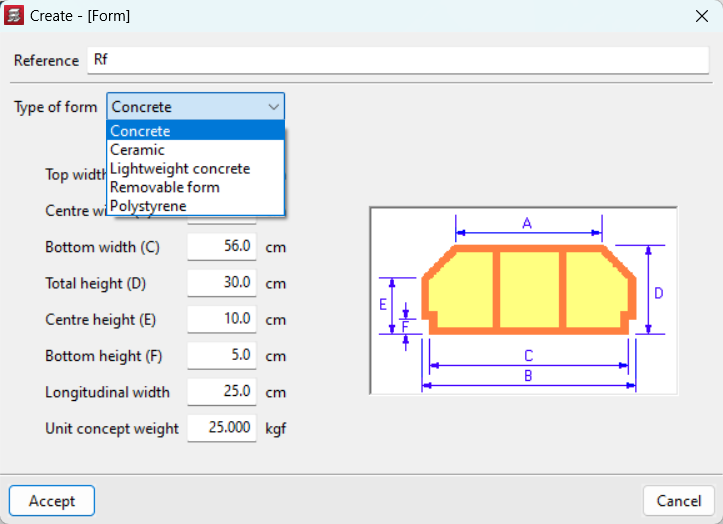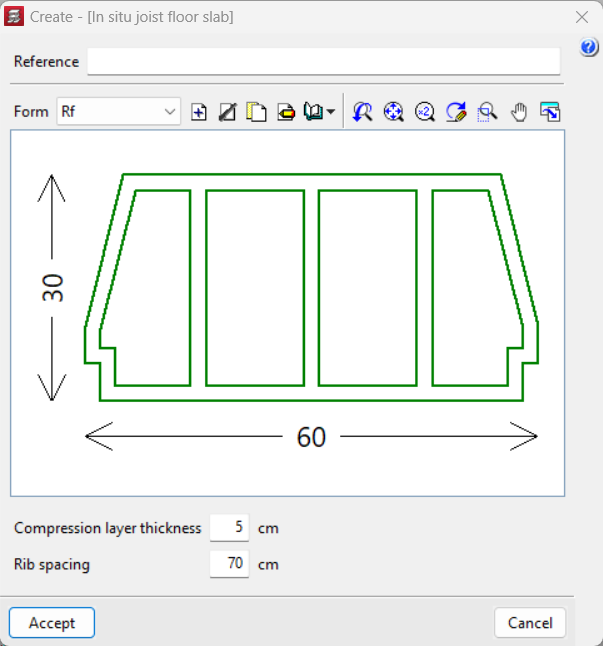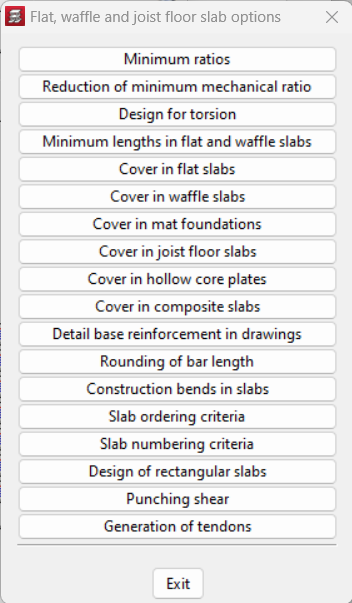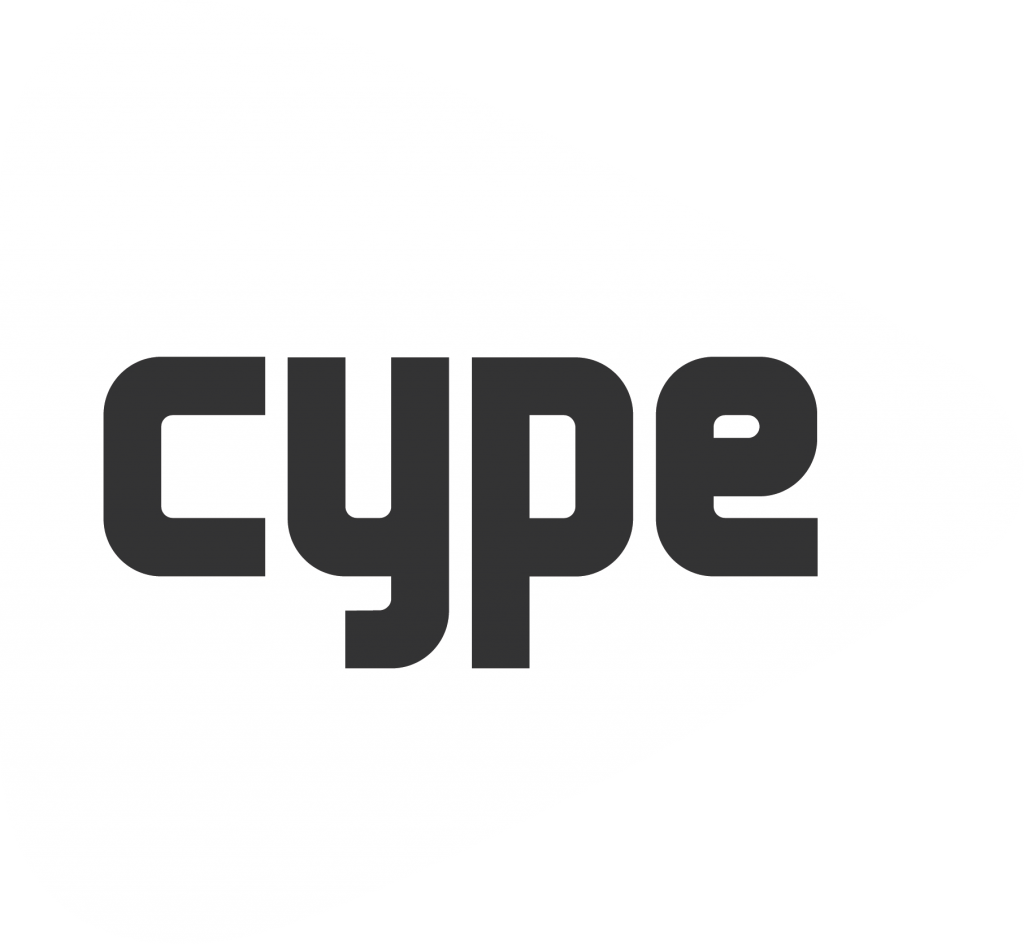Joist floor slabs with cast-in-place joists
With the "Joist floor slabs with cast-in-place joists" module, users can analyse and design joist floor slabs that are assembled entirely on site.
These floor slabs are reinforced in the same way as concrete beams. A positive base reinforcement can be assigned to them from the "Slabs" menu, by accessing the "Assign 'Base reinforcement / Electrowelded mesh'" option.
The following floor slab elements can be defined:
- Compression layer thickness;
- Interaxis;
- Form material;
- Form geometry;
- Form unit weight.
Library of joist floor slabs with cast-in-place joists
The generated joist floor slabs with cast-in-place joist sheets can be stored together with the floor slab sheets from the work of other collaborators. Vaults that are defined for use in the floor slabs can also be included in a vault library.
Design options
The program has several design options with suitable default values that can be configured (minimum negative lengths, minimum moments to be covered by reinforcement, deflection limits, covers, rounding of bar lengths, etc.).
Results output
For cast-in-place joist floor slabs, the program displays the following results on the drawings and the screen:
- Bending moments increased per metre of width;
- Shear force per metre of width at the supporting edge;
- Diameter and length of the bottom reinforcement;
- Diameter and spacing of shear reinforcement;
- Top reinforcement.
The program has tools for matching the design results so that uniform results are obtained to make it easier to interpret the drawings.
Among the reports that can be obtained, the "Joist floor slab reinforcement quantities" and the "Form quantities" (or approximate quantities of the forms of a floor slab) stand out.
User license
For CYPECAD to be able to analyse and design in situ joist floor slabs, the user license must include the "Joist floor slabs with cast-in-place joists" module in addition to CYPECAD.
Other features
To access other features offered by the program, there are several modules which can be found on the "CYPECAD modules" page.


